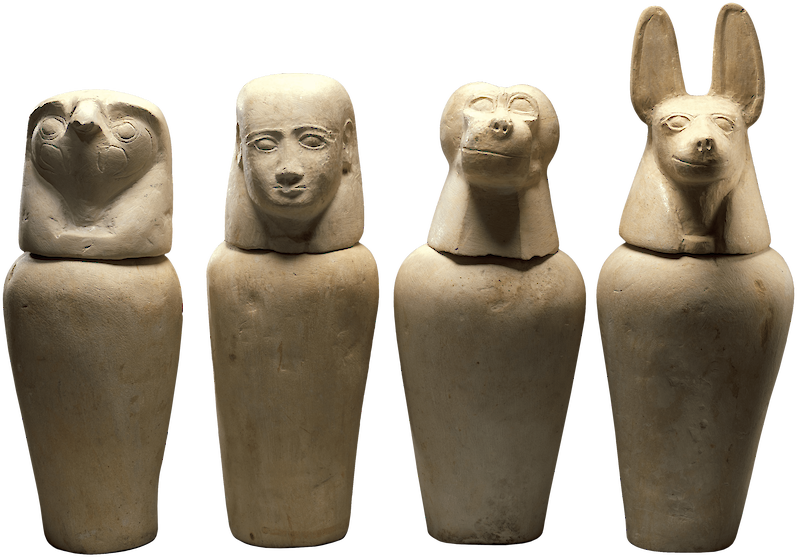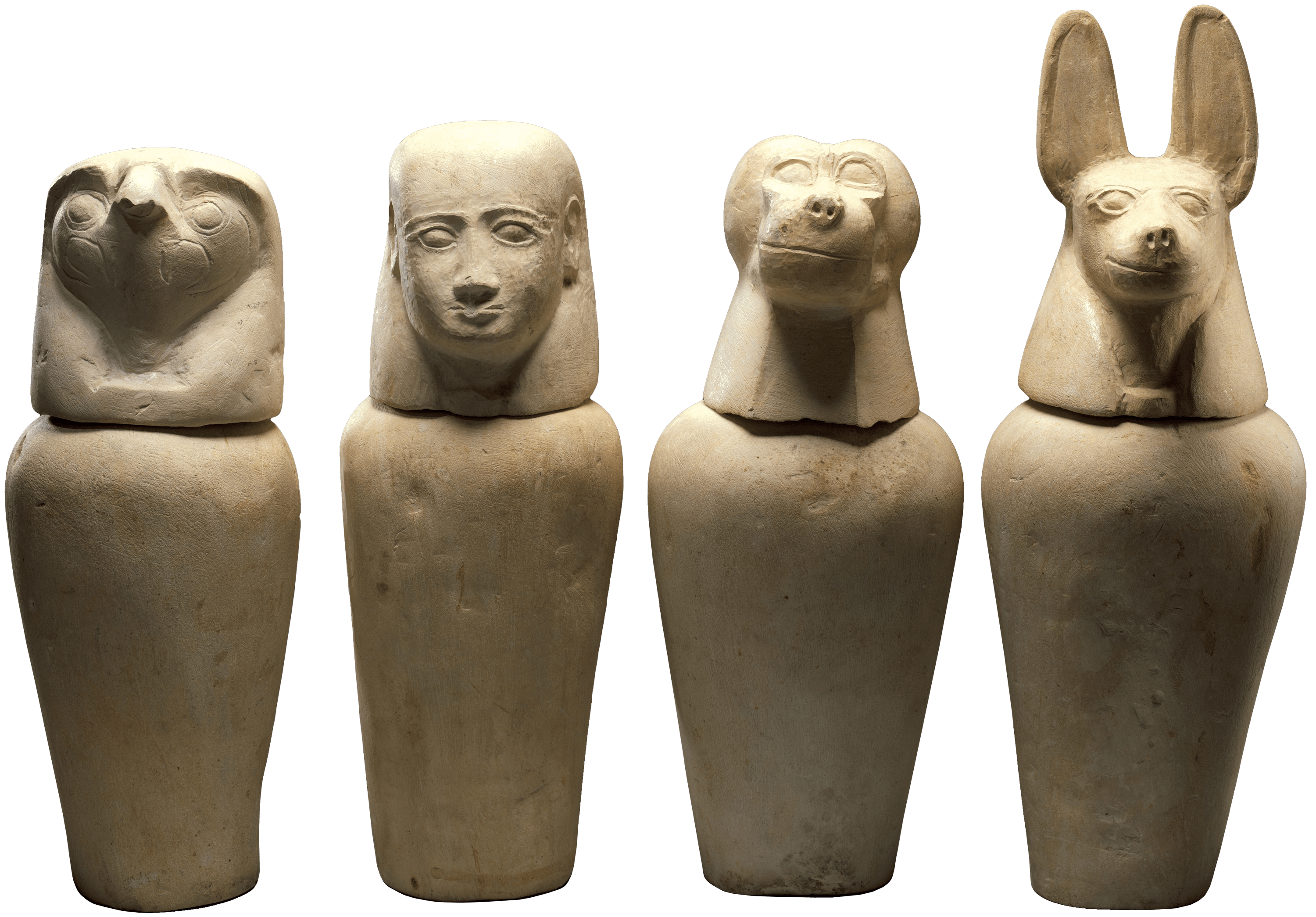


The elaborate sarcophagi, mummies and burial treasures of Ancient Egypt are world famous. Pharaoh Tutankhamun’s lavish collection of death-treasures is on a near perpetual world tour, and museums around the globe boast displays of Egyptian dead ensconced in detailed death masks and hieroglyphic-covered coffins.
But this is a story about the humble side-note of Egyptian burial practice, the canopic jar. During Egypt’s Old Kingdom, as successive pharoahs perfected the art of pyramid building, the practice of mummification was also advancing. Either to aid in the drying and preservation of the body or for symbolic reasons, embalmers began removing the stomach, intestines, lungs, and liver of the deceased to be entombed separately. The first known canopic burial was Queen Hetepheres the First, from appoximately 2465 BCE. Hetepheres was the mother of King Khufu, the builder of the great pyramid at Giza, and her organs were placed in a simple alabaster box with four compartments. Simple, lidded jars for each organ became common soon after, which were typically placed at the foot of the sarcophagus.
During Egypt’s Middle Kingdom, from 2030-1802 BCE, canopic jars took a new significance in the burial process. Since the pharaoh was considered an embodiment of the god Horus, each of the pharoah’s organs was personified by one of the four ‘Sons of Horus'—though tradition differs on whether these minor deities were thought to be Horus’s children, his friends, or facets of Horus himself. Each of the four ‘sons’ was protected by a goddess, and associated with one of the cardinal directions.
Imsety, a human, embodied the liver, was protected by his mother Isis, and whose direction was South.
Duamutef, a jackal, embodied the stomach, was protected by Neith, and whose direction was East.
Hapi, a baboon, embodied the lungs, was protected by Nephthys, and whose direction was North.
Qebehsenuef, a hawk, embodied the intestines, was protected by his mother Serket, and whose direction was West.
The canopic jars pictured above are a particularly interesting example of the tradition, because they never contained any organs. Buried alongside Aafenmut in the Khokha necropolis near Thebes, these jars have removable heads, but only a shallow cavity within—not nearly enough to hold a stomach or lungs. Aafenmut was buried during the 25th Dynasty, the last dynasty that saw common use of canopic jars in burials. By this time, embalmers had evolved their techniques, and organs were returned to the body after mummification. But a ritual thousands of years in the making is hard to change, so ‘dummy’ canopic jars became a common feature of burials after the 21st dynasty.
...
Got questions, comments or corrections about Aafenmut Canopic Jars? Join the conversation in our Discord, and if you enjoy content like this, consider becoming a member for exclusive essays, downloadables, and discounts in the Obelisk Store.
